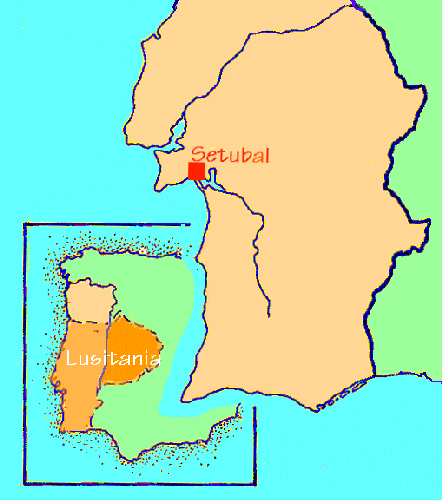|
| Roman Portugal |

We first hear about the people living in the land which is now Portugal - ancient Lusitania - during the last two centuries before Christ, when the people who lived there (Celts, according to the Roman historian Pliny) were gradually dominated by Roman civilisation.
Several accidents of history led to the Roman arrival in Lusitania, and the emergence of Lisbon as Lusitania’s capital. When Carthage, Rome’s oldest rival, was finally defeated in 206 BC, the whole Iberian peninsula was left to Rome, and the territory was divided into two sectors, the westernmost - Hispania Ulterior - roughly equivalent to present-day Portugal.
Particularly attractive to Rome were the two wide estuaries of the Tagus and Sado rivers, abounding in fish. There were armed confrontations between Lusitanians and Romans, but Celtic resistance was gradually stamped out, first south, then north of the Tagus, the Roman general Decius Junius Brutus fortifying Lisbon in 138.
During the civil wars between Crassus, Pompey and Caesar, the conquered peoples south of the Tagus were loyal to Pompey, but those of Lisbon and the north to Caesar, so that upon Caesar’s victory over Pompey, Lisbon was rewarded with the prestigious title of Municipium Civiium Romanorum.
© 1998 Oxfordshire Museum Service, Setúbal Museums and the Benaki Museum